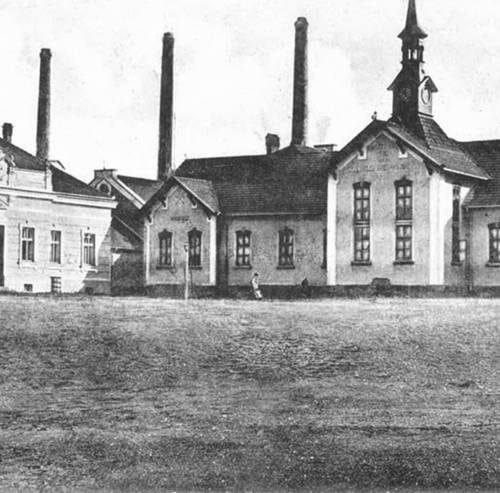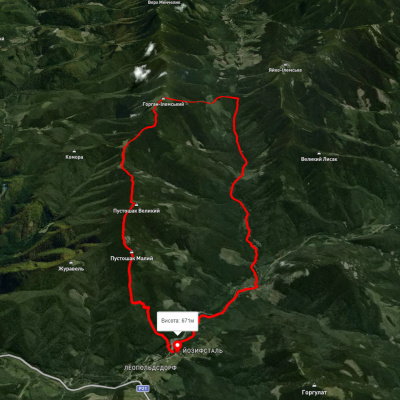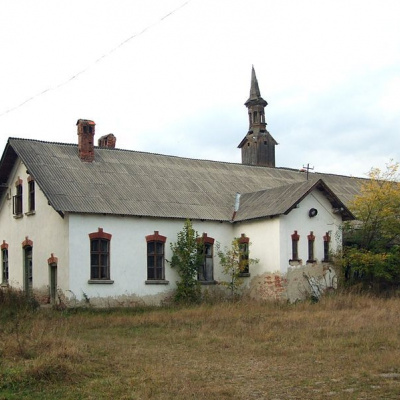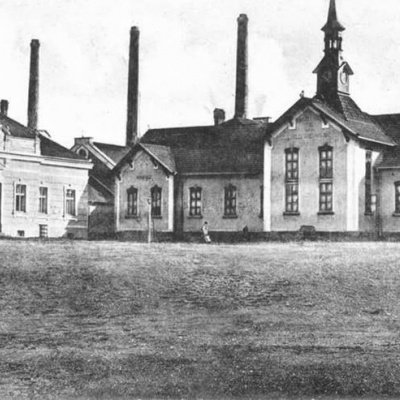Saltworks, Dolyna
The old saltworks in Dolyna is a unique monument of industrial architecture in Ukraine of the 19th and early 20th centuries. This is almost a single example of buildings of this type that have survived to this day and are used for their intended purpose. Some scholars believe that the discovery of salt springs in the vicinity of the Valley dates back to 979. The first written mention of the industry dates back to 1474.
There is a mention of salt production in the Dolyna in a document by which in 1525 King Sigmund I, restoring the Magdeburg Law to the city, established fairs and allowed the townspeople to produce salt in the same quantity and quality as in Kolomyia and sell it to the inhabitants of those lands that had long consumed it, without harming the Kolomyia brine (M. Belinsky, Ancient Poland, Warsaw, 1884, vol. 2, p. 616).
In his monograph, F. Piestrak notes that according to the privileges of King Zygmunt I (1537), the salt deposits of that time were royal property, but kings also allowed private individuals to boil salt. Thus, the industry developed and in the early 19th century Dolyna saltworks was a large enterprise that employed 82 workers: watchmen, wrenches, water workers, blacksmiths, boilermakers, and bodnars.
Water was brought to the salina by a water pipeline from the lake, the pipes were wooden. In 1898, a large fire destroyed the complex, and in 1904 a new saltworks was opened, the ruins of which have survived to this day.

The building of the saltworks
The saltworks is a whole complex of buildings: with a salt boiler, a manipulation building, a room for a salt warehouse, mines and other service and economic facilities for the plant's employees. The complex includes three interconnected workshops. The warehouse is well preserved, but the cooking room, unfortunately, is not. Only a miserable skeleton with a skeleton of rebar and a large stove in the middle remains. The walls are broken and the roof has almost completely collapsed.
The saltworks building is an unusual industrial architectural monument. It is located in the place with which the emergence of Dolyna is associated. The buildings of the saltworks formed a kind of town. All of them are in the same architectural style with characteristic red-tiled roof silhouettes.
Scheme of the saltworks
The salt warehouse building is shaped like a rectangle with a corridor layout. The brine from the wells flows through a chute into the cooking room, and then is fed into the centralized vat for 5-hour evaporation. A day's supply is usually stored in chests.
When the crystallization process begins, the room is sealed and the boiled brine is left to cool to a solid state. The resulting salt is then dried and transferred to the storerooms for further storage as a finished product.
Today the plant is in a dilapidated state. But in the future, new life will be breathed into the ancient Salina, as a large-scale investment project is planned to build a historical and health resort complex. For thousands of years, the valley salt has been the local white gold, the main source of income for the local population. Now its purpose is seen in its use for health purposes.
Be sure to visit the museum-hideout of the insurgent victory and the Dolyna Museum of Local Lore of Tetiana and Omelian Antonovych Boykivshchyna, one of the youngest museums in the Carpathian region, founded in 1998. The museum's experienced guides will help you organize sightseeing tours of Dolyna region if you want to see the bunker where Ukrainian nationalists were hiding, the Carpathian Tram in Vyhoda, Dovbush's Rocks in Bubnyshche or Hoshiv Monastery, Ivan Franko Museum in Lolyn village.
Accommodation around Saltworks, Dolyna:
Nearby hiking trails near Saltworks, Dolyna:
Які маршрути проходять повз Saltworks, Dolyna?
Пропонуємо пройти такі туристичні (пішохідні) маршрути через/біля Saltworks, Dolyna: На Горган Ілемський, с. Мислівка – г. Горган-Ілемський – с. Мислівка, с. Мислівка, через хр. Аршиця, г. Молода, г. Яйко-Ілемське до с. Мислівка, с. Мислівка, через г. Яйко Ілемське, г. Горган Ілемський до с. Мислівка, с. Татарів, через г. Синяк, г. Довбушанка, г. Чорна Клева, г. Братківська, г. Сивуля, г. Кінець Горгану, г. Попадя, г. Грофа до с. Мислівка, с. Мислівка, через г. Вел. Пустушак, пол. Німецька, г. Горган Ілемcький до с. Осмолода





